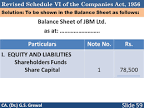Another era of Internet Virus has been creating developing industry alert throughout the most recent couple of years and costing entrepreneurs gigantic measures of time, anxiety and cash.
Subsequent to recent 2013, groups of Internet Online pirates have been running various related tricks where they hold all your business documents to deliver. Much the same as a pirates on the High Seas, until you pay them a payoff (more often than not $300ish in Bitcoin) they keep you out of every one of your files. A few organizations have lost every one of their files and regularly the business therefore, so this article talks about how you can keep yourself from being a casualty. We’ll call this Internet Virus “crypto-locker” in whatever is left of this article – as that is the best known variation generally, however there are really numerous comparative assortments.
Indeed, even bigger organizations are not safe and this assault is turning out to be progressively normal, with educated IT providers being exceptionally acquainted with ensuring you. We do prescribe that in the event that you haven’t conversed with your IT provider about this, that you do as such – demonstrate to them this basic outline article as it might offer help.
To see how the procedure functions, what crypto-locker really does is typically this:
- A fake email containing the crypto-locker internet virus is sent to you (really a little bootstrap for the virus).
- The client is deceived into clicking and running a link in the email; they frequently overlook notices showed.
- Crypto locker keeps running out of sight, scrambling your documents as fast as it can before you take note. The virus is extremely keen and will likewise scramble your server documents and regularly even your backups.
- Once completed, your PC will show a (normally) huge red screen cautioning that every one of your files are currently scrambled and you have 24 hours to pay a payment or lose your documents until the end of time.
- You then pay a payment by Bitcoin of around AU$300 or more, which gives you a rebuilding key which (on the off chance that it works!) you can then use to un-encode your files and get go down and running once more.
This article lists various helpful systems which you can use in use to keep yourself safe.
- Have current antivirus programming on each PC
- Provider email internet virus scanning
- Current backups – server shadow secure
Current updated antivirus software will some of the time identify the internet virus and secure you. Remember that the pirates employ the best and most astute virus journalists so this will just secure you as a less than reliable rule, and once in a while ensures against the exceptionally freshest assortments.
While antivirus is a straightforward step, it can be anything but difficult to disregard after some time and is such a fundamental layer. Some IT suppliers can help here by giving a monitoring service where they can recognize antivirus disappointments and caution you or reactivate your antivirus.
An intriguing side story is that, in 2014, a group of some advanced great folks including government authorities and top security specialists reverse attacked the pirates and oversaw, for some time, to make it possible to decode your documents. Shockingly, the pirates adjusted rapidly and there’s data recommending this no more works for new internet virus.
Beware of this Internet Virus is all I can say!!
We have always wondered what makes a paper plane fly. Some paper planes clearly fly better than the others. In addition, all the paper planes have different aerodynamic designs. Design is just one factor; there are other parameters at work which affect the flight of an airplane. The forces that allow a paper plane to fly are the same ones that apply to real airplanes. A force is something that pushes or pulls on something else. When we throw a paper plane in the air, we are giving the plane a push to move forward. That push is a type of force called thrust. While the plane is flying forward, air moving over and under the wings is providing an upward lift force on the plane. At the same time, air pushing back against the plane is slowing it down, creating a drag force. The weight of the paper plane also affects its flight, as gravity pulls it down towards Earth. All of these forces (thrust, lift, drag and gravity) affect how well a given paper plane’s voyage goes.
Flying involves two major problems; overcoming the weight of an object by some opposing force, and controlling the object in flight. Both of these problems are related to the object’s weight and the location of the center of gravity. Here, in this project, we will try to construct a paper plane and study the impact of weight on the flight of the plane. Since the design and aerodynamics of the plane will be consistent, we shall keep on increasing the weight of the plane and then take down readings for different flights. Once we have sufficient readings, we shall try to average them and arrive at some conclusion which would be in line with our hypothesis.
BACKGROUND INFORMATION
Paper airplanes are fun and easy to make. Watching a paper plane fly through the air has always intrigued us. Science has taught us that there are different concepts of aerodynamics that affect the flight of planes. What allows the paper plane to glide through the air? And why does a paper plane finally land? To find out, we will outline the different concepts of aerodynamics and the forces that get a paper plane to fly and land. These same forces apply to real airplanes, too. A force is something that pushes or pulls on something else.
Now we will examine certain important concepts that are helpful in understanding how planes fly.
Aerodynamics: The word comes from two Greek words: aerios, concerning the air, and dynamis, which means force. Aerodynamics is the study of forces and the resulting motion of objects through the air. Aerodynamics affects the motion of a large airliner, a model rocket, a beach ball thrown near the shore, or a kite flying high overhead. The curveball thrown by big league baseball pitchers gets its curve from aerodynamics. By studying the way air flows around the plane the engineers can define the shape of the plane. The wings, the tail, and the main body or fuselage of the plane all affect the way the air will move around the plane.
Figure 1: Forces affecting a plane’s flight
Force: A force is a push or pull upon an object resulting from the object’s interaction with another object. Whenever there is an interaction between two objects, there is a force upon each of the objects. When the interaction ceases, the two objects no longer experience the force. Forces only exist as a result of an interaction. Force is a quantity that is measured using the standard metric unit known as the Newton. A Newton is abbreviated by an “N.”
Thrust: Thrust is the mechanical force generated by the engines of the aircraft to move the aircraft towards the air. Thrust helps to move the plane in the forward direction.
Lift: Lift is the force that directly opposes the weight of an airplane and holds the airplane in the air. Lift is generated by every part of the airplane, but most of the lift on a normal airliner is generated by the wings. Lift is a mechanical aerodynamic force produced by the motion of the airplane through the air.
Drag: Drag is the aerodynamic force that opposes an aircraft’s motion through the air. Drag is generated by every part of the airplane. It is dependent on the motion of the object. If there is no motion, there is no drag. In short, it causes the aircraft to pull back.
Weight: Weight is the force generated by the gravitational attraction of the earth on the airplane. This force is fundamentally different from the aerodynamic forces, lift and drag. Aerodynamic forces are mechanical forces and the airplane has to be in physical contact with the air which generates the force. The gravitational force is a field force; the source of the force does not have to be in physical contact with the object to generate a pull on the object. For an airplane to maintain a continuous altitude, the lift must equal the weight of the airplane.
Gravity: Gravity, also called gravitation, is a force that exists among all material objects in the universe. For any two objects or particles having nonzero mass, the force of gravity tends to attract them toward each other. Gravity operates on objects of all sizes, from subatomic particles to clusters of galaxies. It also operates over all distances, no matter how small or great. The more massive an object is, the stronger its gravitational pull is. Earth’s gravity is what keeps us on the ground and what causes objects to fall. Gravity is what holds the planets in orbit around the Sun and what keeps the Moon in orbit around Earth.
Wind Tunnel: A wind tunnel is a machine which can simulate the movement of air around an aircraft in flight. In the wind tunnel, the aeronautical engineer can control the conditions that affect the forces and motion of the aircraft. By making careful measurements of the forces on a model of the aircraft, the engineer can determine the magnitude of the forces on the real, full-size aircraft. The wind tunnel model can also be used for diagnostics to make a detailed determination of how the air moves around or through the aircraft.
Turbulence: Turbulence occurs where different air currents are brought together and cause disruptive conditions. This can be due to the mixing of warm and cold air currents, mountain range obstruction, changing wind directions, or erratic winds due to thunderstorms and other severe weather. This causes disturbance in the balance of the four forces mentioned earlier, and thus the airplane will experience a slight bumpiness and/or tilting of the wings. Good communication systems and skilled pilots are essential to safeguard a plane against turbulence.
Bernoulli’s Principle: This is the basic principle which makes aircrafts fly in the air. Bernoulli’s principle helps explain that an aircraft can achieve lift because of the shape of its wings. They are shaped so that that air flows faster over the top of the wing and slower underneath. Fast moving air equals low air pressure while slow moving air equals high air pressure. The high air pressure underneath the wings will therefore push the aircraft up through the lower air pressure.
Streamlines: A streamline is a path traced out by a massless particle as it moves with the flow. The path is not seen, but it is plotted virtually by engineers to understand aerodynamics.
Figure 3: Streamlines around a cylinder
Laws of motion: Sir Isaac Newton proposed three laws of motion in 1665. These Laws of Motion help to explain how a planes flies.
1. If an object is not moving, it will not start moving by itself. If an object is moving, it will not stop or change direction unless something pushes it.
2. Objects will move farther and faster when they are pushed harder.
3. When an object is pushed in one direction, there is always a resistance of the same size in the opposite direction.
Sonic Boom: When the airplane moves through the waves gathered in front of it due to pressure, it makes the sound waves spread out and this creates a loud noise or sonic boom. The sonic boom is caused by a sudden change in the air pressure. When the plane travels faster than sound it is traveling at supersonic speed.
A pilot of a plane has special controls that can be used to fly the plane. There are levers and buttons that the pilot can push to change the yaw, pitch and roll of the plane. Flight control is necessary because it helps to give direction to the aircraft. Below are some of the terms used in flight control.
Yaw: Yaw is the turning of a plane. When the rudder is turned to one side, the airplane moves left or right. The airplane’s nose is pointed in the same direction as the direction of the rudder. The rudder and the ailerons are used together to make a turn.
Pitch: Pitch makes a plane descend or climb. The pilot adjusts the elevators on the tail to make a plane descend or climb. Lowering the elevators caused the airplane’s nose to drop, sending the plane into a down. Raising the elevators causes the airplane to climb.


stock option xpress cs

New businesses enlisted after April 1, 2016, will get 100% income tax exclusion in any three of the initial five years. This is not certain although.
At first look, there’s truly nothing energizing in the Budget for start-ups by and large or e-commerce industry. There was a considerable measure of desires, yet to be reasonable it was unthinkable for the finance minister to make any declaration on the two top things that could have had a genuine effect: GST and FDI in retail (counting B2C e-commerce). The first will require Opposition political parties’ co-operation in passing the Bill and the second is an issue that affects the Bharatiya Janta Party’s shipper support base and might require some more political moving.
Having said this, there were a couple fascinating declarations.
As a subsequent meet-up the sparkling Start-up India event, the Budget has a few things to make life for business people simple. The most critical out of these for me was the guarantee of a Bankruptcy Code this year. Around 95% of start-ups close down and the procedure of shutting down an organization in India is a torment. Combined with the declaration that there will be changes to the Companies Act that will permit new businesses to set up an organization in a day sounds truly promising.
There’s extraordinary spotlight on empowering SC/ST business people and bank offices can subsidize up to two such projects. To bolster the start-ups to get their project off the ground and scale, there’s a guarantee of MOOCs (massive open online courses) to show enterprise in schools and universities. This is another follow up on Start-up India yet to source awesome content and screen quality of usage crosswise over India will require genuine execution by whoever is assigned for this. I like the purpose however execution will be exceptionally extreme.
New businesses enlisted after April 1, 2016, will get 100% income tax exclusion in any three of the initial five years. I am not certain. To qualify as a start-up in India, you need to cause tremendous misfortunes which thus offer you some assistance with raising huge assets from first-class speculators, assemble a strong brand picture, turn into a poster boy and make a world-beating unicorn. Alright, I made this up, yet it does ask the genuine inquiry: why might business people stress over a couple of lakhs of wage expense reserve funds on benefits against billion dollar valuations increased through losses? This declaration sounded more like a serious session.
I like the Rural Digital Literacy Vision. More than six crore family units will access PCs and online trading stages will be set up for ranchers to trade on. This will extend the potential client base for e-commerce firms subsequent to advanced quality will prompt business soon enough. It is likewise an open door for Indian e-commerce firms to hold hands with the administration and set up such rustic trading stages.
Be that as it may, the most essential news for e-commerce firms is a hidden message and I trust the business will see it. The administration has gone for financial reasonability and gross deficiency is being kept up at 3.5%. This is wonderful remembering the normal finance related headwinds all around. On the off chance that the government can fix their belts, doubtlessly modern youthful e-commerce firms can likewise demonstrate some financial control, check wastage, concentrate on economical income and not simply rely on upon supply of external cash-flow to subsidize constantly developing losses.
I am not certain on the off chance that it was expected, but rather to me, this is the main essence of the budget 2016-17 for the e-commerce industry.

At regular intervals or somewhere in the vicinity, something significant happens in mobile. Once per decade, another era of mobile network technology tags along: the primary mobile network systems showed up in the 1980s, GSM followed in the 1990s, 3G landed when the new century rolled over, and LTE started taking off in 2010.
Every era has embarked to alter the imperfections of its antecedent: GSM settled the security shortcomings of simple telephony, 3G was intended to deal with GSM’s absence of mobile data and, given it didn’t abundantly succeed, 4G was expected to at long last make consuming data less of a repulsive experience.
Presently, 5G services are rising in front of the turn of another decade and the following huge change to hit the mobile world. In any case, what’s the issue that 5G’s intended to fix?
Here’s the thing: nobody’s too certain around 5G services, not by any means, not yet. The primary issue that individuals have with their mobile service today are scope and cost – neither of which are issues that need another era of mobile tech to settle. Toss a touch of money into building out LTE and LTE-An and quite a bit of these headaches would leave, yet the business is furrowing full steam ahead into 5G. Rather, the industry is trusting 5G will take care of issues we don’t have today, yet those that could keep us down years later on.
The procedure of building each new mobile network standard starts years before it’s put into utilization and once up and running, those standards will stay set up in different structures for 10 years or more. With 5G, we’re building a standard that will at present be being used in 2030 and past – and the mobile business has a ghastly reputation with regards to future-looking.
“5G” is something of a misnomer: the standard doesn’t exist yet. It will be months, likely years, before it’s at long last characterized. Meanwhile, connections, governments, and scholastics are dealing with the advancements that will frame the standard, however today, 5G services are simply an idea, and one that needs to go from vapourware to true rollout in the following six years.
By insight, the primary systems based on the standard will be taken off in 2020. Keeping in mind the end goal to meet that due date, the vast majority of the hard yards in the 5G services standardisation procedure will must be finished throughout the following a few years, with benchmarks bodies including the 3GPP, ITU, and IEEE, and additionally colleges, standard bodies, and uncommon intrigues gathers, all having their input.
The top 10 global cellular companies in India who will be launching 5 G services soon are as follows:
- Mahanagar Telephone Nigam Ltd. (MTNL)
- Sistema Shyam Teleservices Ltd. (SSTL)
- Uninor
- Tata Teleservices (TTL)
- Aircel
- Bharat Sanchar Nigam Limited (BSNL)
- Reliance Communications
- Idea Cellular
- Vodafone India
- Bharti Airtel
“It is critical for the business to keep creating 5G services and to cooperate to develop the standards for 5G innovation in front of its normal business presentation from 2020 onwards,” Stay connected!



Co Owner at findtutoronline.net
1. Introduction
According to the Annual Report 2015 of IBM, the current strategic imperative revenue mix of the company, against the market get noted as follows –
Source: IBM (2015)
It has been clearly marked in the current competitive market scenario, IBM has considered its strategic imperatives as significant elements to its management process. Its expansion in the fields of analytics, cloud, mobile, security, and social context remains successful in gaining 27% of its total revenue of $25 billion in the year 2014. With the establishment of 3,000 patents in 2014, the company acknowledges that it is the capacity and efficiency of its human resource (HR) that integrated technology in accordance to the business proceedings the clients, and adding success to the company on a worldwide basis.
Considering developmental approaches of IBM as the core subject, this research is offering a research on the ways the Human Resources are recruited, generated, maintained, and further retained in IBM. The approach is in gaining information about the strategic management formulations as considered by IBM in being able remain competitive in the global market. For this purpose the official declarations of IBM, like Annual reports and news articles will be considered. Further analytical overview will include various theories, peer-reviewed journal articles, and literary sources for the understanding of Strategic Human Resource Management, with close study of the practices in IBM.
1.1 Research Question
Is it possible for any company to follow the SHRM formulation of IBM in order to sustain and grow in the current global market?
1.2 Research Purpose
The core purpose of this report is to analyse the SHRM of IBM, in order to gain necessary knowledge about the implementation of strategic theories and practices in the HR domain for organisational success. As under the intensive pressure of globalisation, the companies are facing enormous hurdles in recruiting the right employees, train & motivate them, and get most strenuous in retaining valued employees; this research aims to offer the tips and tricks of IBM in resolving these issues in particular.
1.3 Research Rationale
As against many competitive software companies, like Accenture, Hewlett-Packard, Apple, etc., IBM with 379,592 employees, excels itself in the process of recruiting, training & motivating, and retaining employees for organisational growth and long term sustainability in the market (IBM, 2014). Its achievements and growth makes it one of the most best place for generating a good career for an employee (IBM, 2015 a). This is the reason that IBM justifies itself as an ideal organisation to understand its HR strategic management for the upliftment of those companies that still strive to gain more potentiality in global market. By considering the HR management strategies of IBM and its experiences in dealing with various issues and risks of the market, there can be a real understanding of initiating a business in the global marketing scenario.
2. Literature Review
Boote & Beile (2005) stated the purpose of literature review in a very comprehensive manner. For these researchers, the purpose of the literature review in a research is to evaluate different studies that are connected to research question and objectives. In this approach, the current research aims in describing or summarising, evaluating and further comprehending the content of different literary sources. The aim is to identify the elements and features of IBM’s SHRM that has made it so successful in the international marketing domain. The selection of the literary sources, with be very limited and specifically in context of the research topic (Kirby, et al., 2006). However, some of the data research in quest of establishing the relationship of the literature review with the current research.
2.1 Strategic HR Management
According to Hunt (2014), the strategic management for a firm is about creating the craftsmanship in the management process, formulating and generating resources and implementing as well as evaluating the approaches under cross-functional scopes for achieving organisational objectives. In reference to the developmental approaches of SHRM, Monahan (2008) states that in order to improve HRM in an organisation, there is the need to develop interactivity among the members. It is through interactive provisions that the company can have increased rates of effectiveness and excellence in the performance of the HR.
2.1.1 Common Global Practices
The report of Dermol and Rakowska (edts. 2014) about the application of SHRM in the global periphery marks the aspects of demographic changes that are creating hudles in cross-cultural communications. Moreover, these scholars noted that organisations are regularly facing lack of talented staff and professional employees, who can assist in managing organisational diversity and create potentiality at the workplace. Thus, it has been clearly noted that the strategic HR management in the current international market is more concerned about the gaining platforms of diversity management for handling cross-cultural working environment. research led by Söderlund & Tell (2011) refers to the process of team building through various employee programs and deployment of temporary tasks among the employees from different cultures. The inclusion of the ideology that the ‘the organization of resources is equally important as the resources themselves’ (Söderlund, 2011). The core purpose of global approach to SHRM is related to the recruitment and creation of professional experts and further retaining them for developing successful work patterns within the organisation.
2.1.2 SHRM at IBM: A Case Study
As the issue of diversity management appears to be the core matter of concern in the process of organisational development, this research is considering the SHRM of IBM as a case study.
International Business Machines Corporation or IBM, is recognised as a MSC in the field of IT consultation and computer technology. With its corporate headquarter in Armonk, North Castle of NY, US; IBM is successful in establishing its business in almost every major nation of the world. It is an IT firm that was established in 19th century with the aim to manufacture as well as sell computer software and hardware, along with services in the domain of infrastructure, hosting, and consultations from computers to the sector of nanotechnology (Selinger, edt. 2006).
However, the reason for selecting IBM as the case study for this research is due to the multicapability of the IBM hr in generating excellence in diversified fields. As stated in the IBM Annual Report 2015, IBM is currently creating a complete ‘new generation of critical systems’ that is efficient in offering its clients with the provisions for ‘exploring a cure for cancer, unclogging city traffic, reducing risk, improving the safety of food supplies, and serving their own employees, customers, citizens and patients with greater levels of understanding, personalization and intimacy’. For all these scopes, IBM is the owner of the HR team that is not only professionally specialised; but are dedicated employees, committed to serve the organisation on a long-term basis.
2.2 Theory to Praxis
For the current research, there are two theories that are considered for understanding the relevance of SHRM and necessary approaches to gain maximum effectiveness, amidst global competitive market. For this purpose, this research is concentrating on the theories of Diversity Management and Creative Destruction. It is through these theoretical approaches on practical field of IBM that this research paper will bring in the elements for recruiting right candidates, training and motivating them for organisational success; and retaining those who are assets to the company.
2.2.1 SHRM Theories
The two SHRM theories selected for this research are – Diversity Managementand Creative Destruction.
Diversity Management
Kunze, et al (2011) derived that there are innumerable research works that are laying emphasis on the implementation of diversity management in MNCs and those organisations that are planning to go international, in order to gain positive responses in the workplace environment. Attempts are made in terms of collecting the interconnectivity between diversity management and the performance of the organisation. Studies analysed by Joshi & Roh (2009) mentions the importance of climate and culture maintenance within an organization, especially in context of stereotypes of the staff members and the executives about the issues related to age, gender, race, origin, etc. A meta-analysis led by Pekka & Seija (2011) states that ignorance of an organisation to the aforementioned employees’ stereotypes laid negative impact over the success process of the company and thus inclusion of diversity management, where the employees are trained to maintain equality at the workplace gains extensive emphasis.
Creative Destruction
The theoretical approach of Schumpeter in generating creative destruction within an organisation aims in removing the notion of capitalism, which is noted for ‘incessantly revolutionizes the economic structure from within, incessantly destroying the old one, incessantly creating a new one’ (Schumpeter, 1942, p. 82). According to Kirchhoff, et al (2013) creative destruction as noted by Schumpeter is the demand of contemporary international business approach. Under this theoretical loom, the companies need to consider novel production process, products, resources, marketing formulation and organisational forms; as per the new market. Carayannis, et al. (2007) referred that innovation should be added to the skill of entrepreneurship and the HR of the organisation should be able to complement external business atmosphere with internal working environment. For this purpose, destruction of current organisational trend with enough creativity is important for gaining flexible approaches as per new international markets.
2.2.2 Implementation at IBM
Selection of IBM for understanding the theoretical approaches of Diversity Management and Creative Destruction in managing HR strategically, is done on the basis of multicultural amalgamation of employees noted within IBM. As observed by Thomas & Kanji (2004) strategic formulation for managing HR within IBM is unique as it promotes diversity in its workplace. Recruitment of women employees, employees from Afro-American origin, disabled employees are part of the system without any discrimination. Moreover, its employees list includes Asian, gay & lesbians, black and brown, Hispanic origin, Native Americans, etc. IBM thus, even holds the prestigious recognition of 2013 Diversity Inc from being at the Top 10 Companies of the Global Diversity list (Thomas & Kanji, 2004).
2.3 Current Issues
According to Lockyer and Scholarios (2005), Zingheim, et al (2009), Wartzman (2011) and Kaufman, et al (2015); in last decade the basic issues faced by most of the companies in the global scenario are related to the issues of recruiting professional employees, right kind of training and motivational strategies for organisational success; and retention of employees who are supporting the company at the best.
Pl see more at : http://www.findtutoronline.net/blog
Suggestions & feedback as most welcome.
Agenda:- 1) Introduction
2) Credit Management 3) Assets Repossessions & disposals
4)Mortgages
5) Legal Implications
6) Aging Analysis
7) Follow-up Report
8) Agency Management
9) Review
10) Debtors Planning & Actions Taken
11) Conclusions
Introduction & Credit Management
- Credit Evaluation which includes credit worthiness of customers for Retail Assets as well as Corporate.
- Documents required for checking:-For Corporate-Profit & Loss & Balance Sheet analysis, Ratio Analysis, References check with Bankers, past track record in the market, feedback checking etc. Working capital requirement forecast. For Individual -Retail customers ,the following documents required: any property document like LIC Policy, Any assets ownership ,Bank Statement past six months, Repayment track record if any loan taken from any other financial institutions, Electricity Bill or telephone Bills, Property tax if it is agricultural base then Extact-7 form required. If it is rented house, then rental agreement along with guarantors.
- Customers should be divided into four categories namely No.1) Good customers. No.2) Bad customers No.3) Doubtful customers No.4) Slightly Risky customers.
- Exchange of Information through Industry wise Credit Negative Bureau for defaulter customers. Either sharing information from other financial institutions.
- Issuance of Public Notice in the Local newspaper for defaulter customers.
- 138 should be implemented for cheque bouncing.
-
Assets Repossessions & Disposals & Mortgages
- Customers which is more than 3 instalments Outstanding then his Assets is
- Seized by the Banks or financial institutions by issuance seizing letter to the
- Agency for Seizing. Then seizure of the Products made.
- After seizing the Products,it is disposed off after issueing proper notice to the customers.
- If the customers has got agricultural lands huge in his name, although he is
- A big defaulter of the bank or financial Institutions, in that case a Mortgage
- Deed is prepared in his name & kept by the Bank.
Legal Implications
- Sec. 138 should be made for cheque Bouncing.
Summons should be served to the customers through local Police StationsTo the defaulter customers.
- Sec.156 should be implemented through court for Possessions of the vehicles through court.
- Sec.9 should be implemented for attachment of the Property through court.
- 406 should be implemented for breach of trust.
- Sec.420 should be implemented for cheating /fraud.
So Proper receivables Management should be effective with the help of
Legal Deptt.
- Aging Analysis:- This report is based on customers due on Number of days
i.e. >30 days, >60 days, >90 days & above. With that report ,Collection Executives should visit to the customers for recovery of outstanding.
- Follow-up Report:- With this report, Agency has to follow-up with the customers for recovery . Telecalling should be made to the defaulter Customers on the basis of this reports.
- Agency Management:- Each & every Banks and financial institutions has to recruit Agencies with proper manpower on the basis of number of cases allotted to each Agency. So, Proper Agency Management by the Collections Manager is the good step for Receivables Management.
- Review:- It has to be taken from each Agency on case to case basis by the Recovery Executive or by the Collections head by the Bank. Agencies performance can be judged on the basis of Review. Renewal of Agencies Can be made on the basis of this or Agency can be terminated for nor-performance.
- Debtors Planning & Actions Taken:- Mapping of debtors is the first step for debtors Planning. Field Credit Investigation should be made on strong basis. Recruitment of good Agencies. Plan of Actions should be taken for the month for effective Receivabels Management which are mentioned below:-
- Collection Target should be set for each month for a particular regions or Branches & it should be achieved, no shortfall is accepted.
- Repossessions of Assets should be mandatory.
- Disposal of Re-possessions of seized assets with in the time frame.
- Effective Telecalling systems should be implemented.
- Branch performance review should be conducted on monthly basis for
Effective Receivables Management.
6) Frequent Field Visit should be necessary for chronic defaulters by the topofficials of the Bank or financial institutions.Recovery Channels like Post Office, sub-dealers/Dealers appointing as collection agent.
- Conclusions:- A sale is not completed until & unless the money is recovered or collected from the customers i.e. Receivables Management for Financial institutions/Non-banking Financial institutions/Banks /Telecom Industries.
- See more at http://www.findtutoronline.net/blog
- Suggestions & feedback are most welcome.

The topic “Crisis of Fund Management” consists of three important words -Crisis,fund and management. Now, let me conceptualise the term “fund” first.
(1) Fund : The term “fund” is defined differently in different topics of financial Management.The term “Fund, used in working capital management can not be construed as an equivalent to the fund used in fund flow statement for financial statement analysis. The term fund has been used to indicate the quantum of liquid cash available at any point of time either in iron-chest or in bank account as the case may be. It is true that higher the liquidity, lower the risk and obviously lower the profit as profitability and risk are corelated. Some relaxation has been made by including the inventory or value of stock into the fund.
(2) Management : The fund management and cash management are not the same thing. The main focus of Cash management is to receive and utilise the cash in the befitting manner in Govt Undertakings- this aspect is well known even to be a layman. Usually, a budget is prepared and it is approved by the Govt. The Expenditure is incurred,bills received,it is passed for payment and the payment is made through Reserve Bank of India. The Govt accounts are not Constitutionally supposed to accrue interest. That is why it does not matter whether the idel cash is kept in current Account or in savings account or in short term fixed deposit. What is most important in this case is that the Govt should get the money as and when approached. This fund management technique is mostly imported by the PSUs and the autonomous body as most of the Heads of those organisations belong to the bureaucracuy of the Govt. On Analysis, it may be seen that the PSUs and autonomous bodies are loosing crores of rupees for this faulty cash management system or fund management system.
(3) Crisis : Slight touch is evident as to the crisis of fund management surfaces during the fund management in PSUs. The basic Crisis generates in the suystem itself. It is seen from the financial reports,balance sheet,statement of accounts or budget speech that considerably, a larger quantum of idle cash is lying in current Account or in iron chest of PSUs for years together without earning any interest thereof though the quantum of interest earned could have solve reasonably the problem of shortage of fund in the PSUs.
Another crisis is revealed in the management of retained earnings. It is interesting to note that some Central Govt Undertakings are not maintaining the Commercial Accounting procedures so far the treatment of Depreciation fund is concerned. In some cases,it is revealed that though Depreciation is charged in Profit & Loss Account, the same is not being invested or utilised in a well -stipulated way so that the accumulated sum can jolly well meet a bigger portion of demand for fund for replacement of plants and machineries of the PSU’s are going to be out of order,antidated and obsolete. In some cases the capacity is reduced to nil, operational and maintenance expenses are going high. The management is equivocal for modernisation but the fund created by charging against the Profit & Loss A/c can hardly be available at the nick of time. This simply speaks the crisis of fund management arising out of non-professional fund management.
The third point of crisis is noticed in lack of proper store management and the unwillingness to realise the receivables at or before the expiry of Credit period.As a matter of fact,most of the PSUs are to work against advance.In this case the net working capital is negative(-) as CL > CA but in practice, it is seen that the position is reverse. Most of the PSU are not suffering from order to supply or manufacture but they are suffering from inadequate production and lesser marketability. This has been aggravated by the high overhead expenditure, mostly because of overtime allowances and existances of large nos of high salaried persons in the top level. In this way, if i go on writing differnt facets of crisis, the work will be voluminous in nature. So to concentrate on the topic we have to find out the core of crisis.
See more at http://www.findtutoronline.net/blog
Suggestions & feedback are most welcome.

Balance sheet is a summary of balances which showed Liabilities side as well as Asset side. I discovered a formulae at my Own level to make it meaningful & memorise the same for Mba’s/CA’s/CMA’s & also Under Graduates commerce level.
On liability Side : S R Sen Under Control OF Police
On Asset Side : Five Indian Cultivators Looking A Melody
Each Alphabet first letter denotes the Heading of Balance sheet of both Assets & Liabilities which is mentioned below :
On Liabilities side :
S–Stands for—-Share Capital–Equity Shares-Authorised,Subscribed,Issued & paid up, Preference shares will come under this Head.
R–Stands for—-Reserves & Surplus—General Reserves,P&L Cr. balance,Share premium,Capital Reserves etc will come under this Head.
Sen—Stands for ——–Secured Loans—-Loans against mortgage of Fixed Assets.
Under— –Stands for ————-Unsecured Loans—–6% debentures
Control—Stands for——Current Liabilities—Sundry Creditors,Bills payable,Outstanding Expenses etc.
of
Police ——Stands for ——Provisions for Taxations,Proposed Divident, Provision of Taxations etc.
On the Assets Side :
Five—-F stands for—-Fixed Assets—Land & Building,Plant & machineries,Car,Patents & copywrights,Furniture & fixtures,Goodwill etc
Indian—I stands for—–Investments- Purchase of Nationals savings certificate, Purchase of IDBI Bonds etc.
Cultivators—C stands for—-Current Assets———-Sundry Debtors,Bills Receivables,Inventory,Cash in hand, Cash at Bank etc
Looking ——L Stands for—Loans & Advances——Stafff Salary Advance, Advance Rent, Loans given to Outsiders etc.
A——stands for—-All Advances
Melody—M Stands for —-Miscellaneous Expenditure——Premilinary Expenditures. Discount on Issue of Shares,Advertising Suspense etc.
See more at : http ://www.findtutoronline.net/blog
Suggestions & feedback are most welcome.

Logistics & Supply Chain Management-Kooheji & Sons (2)













